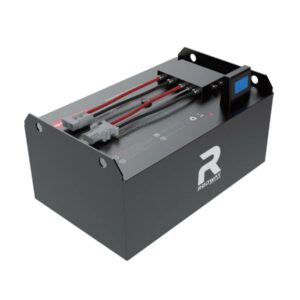How Is Rising Demand for Forklift Batteries Expanding US Manufacturing?
The rising demand for forklift batteries in the US is accelerating manufacturing expansion as companies invest in advanced production facilities, lithium-ion technology, and sustainable supply chains. This growth is driven by e-commerce logistics, automation, and stricter emission regulations, positioning the US as a competitive hub for energy-efficient material handling solutions. Lithium-ion batteries dominate due to longer lifespans and faster charging.
What Factors Are Driving the Surge in Forklift Battery Demand?

E-commerce growth requires larger warehouses and faster logistics, increasing forklift usage. Stricter emissions regulations phase out lead-acid batteries, while lithium-ion adoption rises due to efficiency. Automation in manufacturing demands reliable energy sources, and post-pandemic supply chain reshoring boosts domestic production. Federal incentives like the Inflation Reduction Act further stimulate battery manufacturing investments.
Warehouse operators now prioritize batteries enabling 24/7 operations through rapid charging capabilities. A 2023 MHI report shows 68% of distribution centers have upgraded to lithium-ion systems within the past two years. The shift to renewable-powered facilities also drives demand for batteries compatible with solar energy storage systems. Major retailers like Amazon and Walmart now require suppliers to use electric forklifts exclusively in their distribution networks, creating cascading demand through supply chains.
How Is Manufacturing Expansion Addressing Battery Production Needs?
Companies like East Penn Manufacturing and Clarios are scaling lithium-ion production lines, while startups like OneD Battery Sciences innovate anode materials. New facilities in Georgia and Tennessee leverage renewable energy to meet sustainability goals. Automation in battery assembly reduces costs, and partnerships with EV manufacturers optimize supply chains for forklift-specific battery designs.
Which Battery Technologies Are Leading the Forklift Industry Shift?
Lithium iron phosphate (LFP) batteries dominate new forklifts due to thermal stability and 3,000+ cycle lifespans. Nickel manganese cobalt (NMC) variants cater to high-intensity applications, while solid-state prototypes promise 15-minute charging. Lead-acid remains in legacy systems but faces phase-outs. Hydrogen fuel cells emerge for multi-shift operations, with Plug Power deploying 10,000+ units in US warehouses since 2022.
| Technology | Cycle Life | Charging Time | Applications |
|---|---|---|---|
| LFP | 3,000+ | 1-2 hours | General warehousing |
| NMC | 2,500 | 45 minutes | Cold storage |
| Hydrogen | 10,000+ | 3 minutes | Multi-shift operations |
How Are Sustainability Goals Influencing Battery Manufacturing Practices?
Manufacturers achieve 34% emissions reduction through closed-loop recycling systems like Exide’s EcoBattery program. Solar-powered plants in Arizona and Texas offset 62% of energy use. ISO 14001-certified facilities minimize waste, while blockchain tracking ensures ethical cobalt sourcing. The industry aims for 90% recyclability by 2028, per the Industrial Battery Consortium’s roadmap.
New water-based electrode processing eliminates toxic solvents, reducing factory VOC emissions by 89%. Companies now design batteries with disassembly in mind—Delta-Q Technologies’ latest models can be separated into components within 12 minutes using standardized tools. Third-party audits verify that 94% of battery manufacturers meet the Department of Energy’s clean production benchmarks, with many plants achieving carbon neutrality through onsite renewable generation and carbon credit purchases.
“The forklift battery market is undergoing its most radical transformation since the 1950s. Lithium adoption isn’t just about energy density—it’s enabling smart warehouses with IoT-connected fleets that optimize charging cycles in real time. Companies investing in US-based R&D will dominate the $28 billion global market by 2030.” — Dr. Elena Torres, Director of Industrial Energy Systems at MIT
FAQs
- How long do lithium forklift batteries last compared to lead-acid?
- Lithium batteries last 3-4 times longer (10+ years) with 3,000-5,000 cycles vs. lead-acid’s 1,500 cycles.
- What’s the average cost difference between battery types?
- Lithium costs 2-3x upfront ($15k-$25k) but offers 40% lower TCO over 10 years due to reduced maintenance and downtime.
- Are there tax credits for switching to electric forklifts?
- Yes—Section 179 deductions allow up to $1.05 million in immediate write-offs, plus state-specific clean energy incentives.
